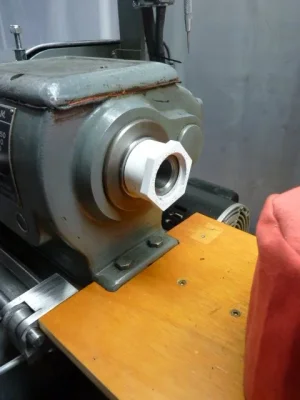I'm looking for someone to educate me on the finer points of internal threading. As a baseline, I've never internally thread anything.
I recently ordered some tool holders/carbide-inserts from Aliexpress, and the learning curve on the insert/holder naming conventions was pretty steep. When I looked at the inserts and holders that arrived, I'm still confused.
Some base questions I have are:
Left hand vs. Right Hand internal threading
- What side of the bore does the tool work? I've ready about inverting the cutter and running in reverse etc. but haven't put any of it into practice. My right-hand holder looks to cut on the left side of the bore, the left hand holder looks to cut on the right?
- Does your chuck always run in the normal (forward) rotation?
- Do you thread towards the headstock or away from it?
HSS vs. Carbide (laydown) insert
Pros/Cons?
ACME Threading
- Internally, assuming a larger bore (1.5" or bigger), single-point or tap?
- HSS vs. Carbide?
I know nothing -- all opinions welcome -- you can't hurt my feelings.
Bonus Question:
I know this response is late to the thread, and I know there are some excellent responses already posted. But I thought you might appreciate seeing a copy of my own notes written for myself about 15 years ago when I first wanted to try cutting threads from the backside of the lathe. I too found the LH/RH outside/inside tool thing confusing.
Cheers!
The only difference between Right and Left Hand Threading Tools is the angle that the trailing edge of the cutter makes so that it can follow the thread groove without scraping on the edge of the grooves.
1. For Right Hand Threads, the same RH tool geometry will cut both outside threads (front in forward and rear in reverse), and the opposite trailing edge angle tool (LH tool) will cut both inside threads (front inside in forward and rear inside in reverse).
2. Left hand threads are the opposite of #1 above. LH tool tips cut outside LH threads, and RH tool tips cut inside LH threads.
3. Within limits, thread pitch and size affect the clearance requirements of the cutting tool bit both in terms of the tip shape (which affects the cut quality and the root of each thread) and the angle of the edge trailing away from the tip (which is mostly determined by the thread diameter and the thread pitch).
4. Theoretically it is possible to cut threads with an upside down tool. But practically speaking, upside down tools don't work well. There is no rigidity in the tool holder because it is lifting away from the compound. To work best, they should push down to the compound in reaction to the force of the work spinning against them.
5. Preground hss or carbide inserts are only sold as RH and LH tips. But RH outside = LH inside, and LH outside = RH inside.
6. Care must be used when cutting inside threads in small diameter holes to ensure there is enough clearance to clear the trailing edge. Basically, the radius of the trailing edge must be less than the hole radius.

